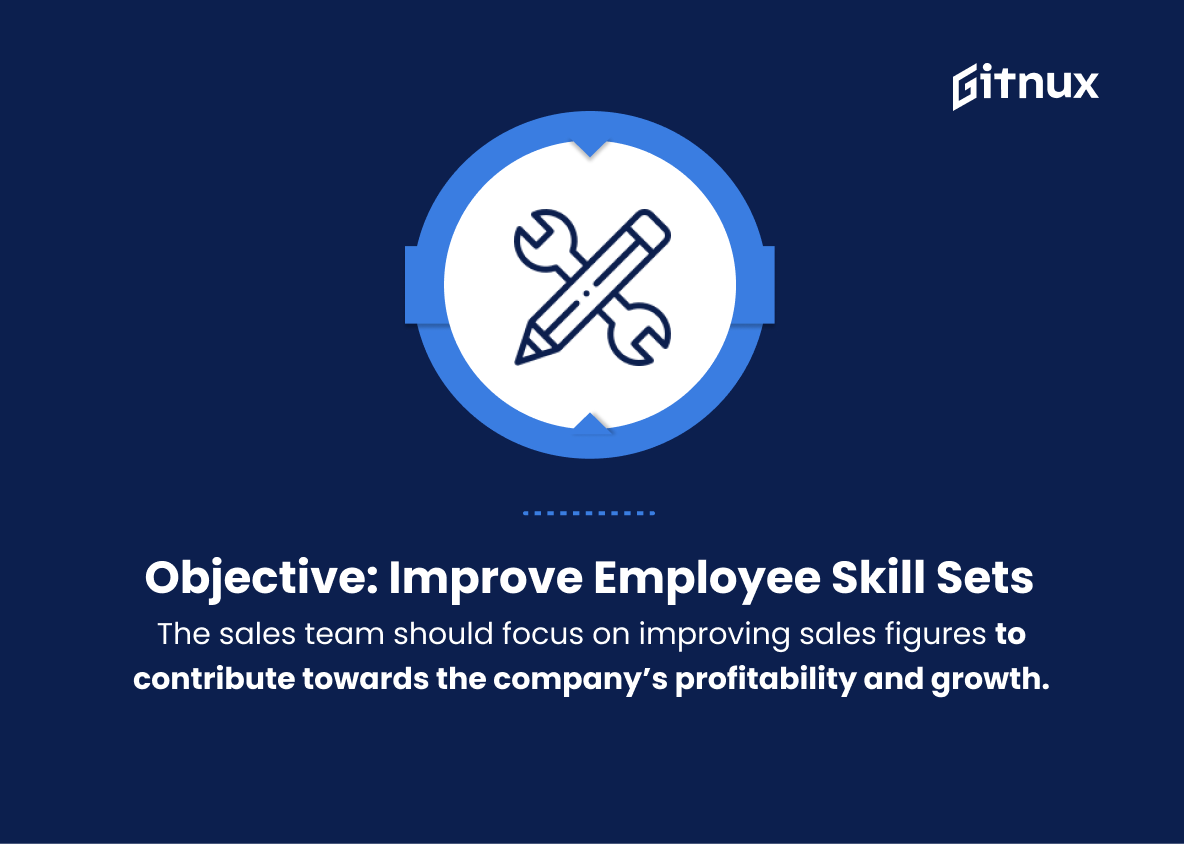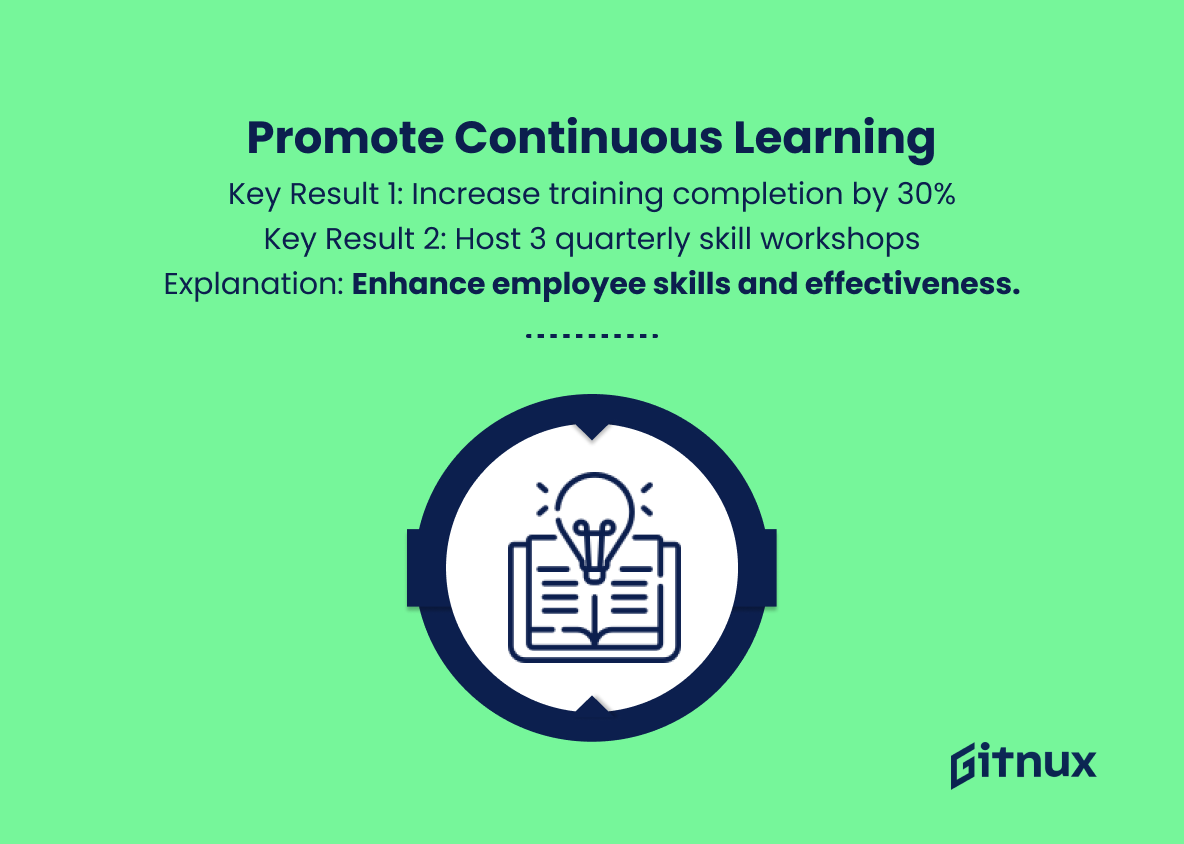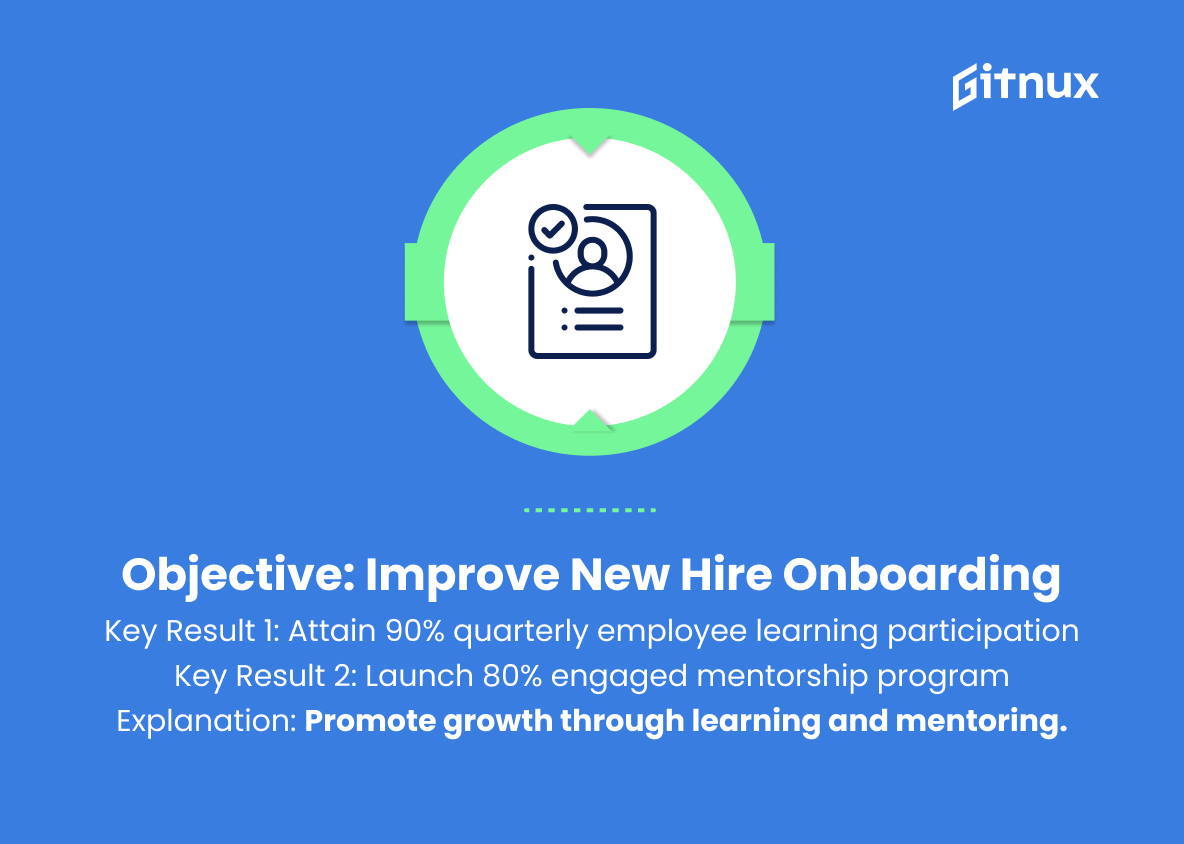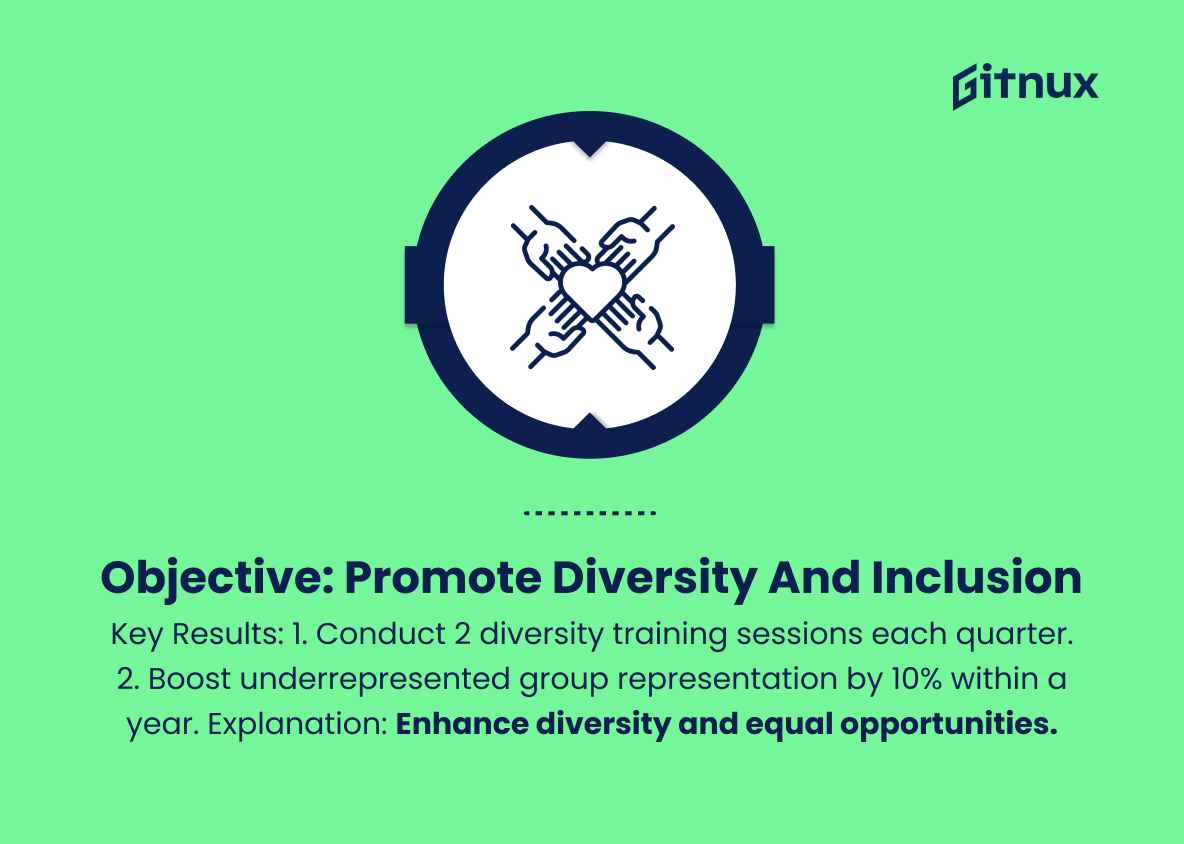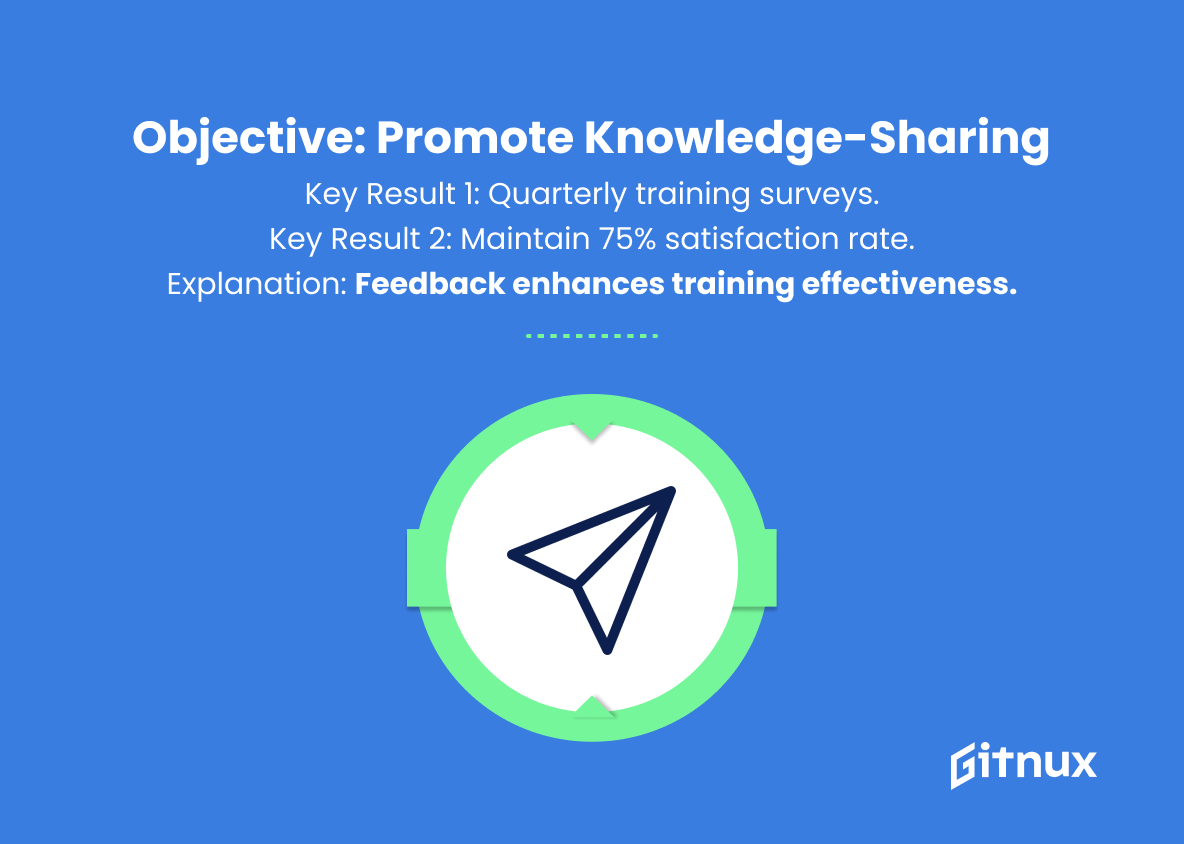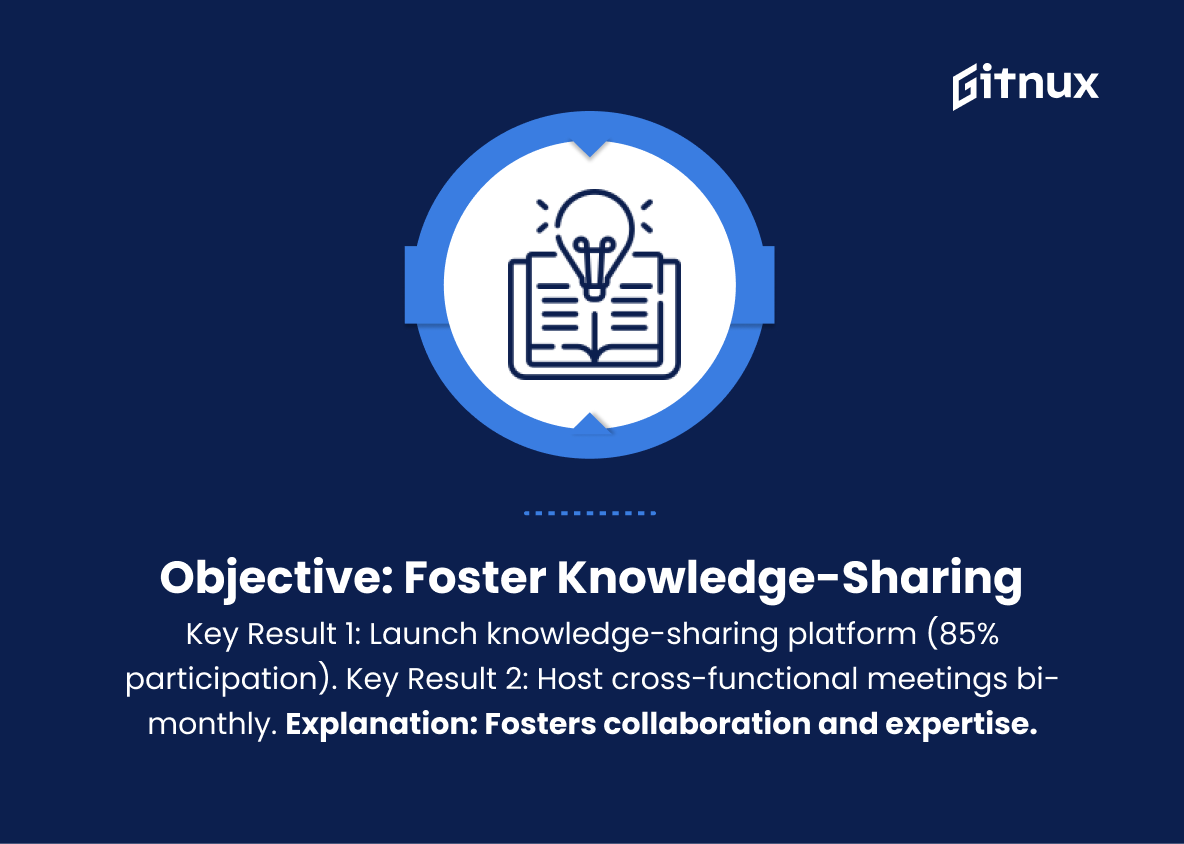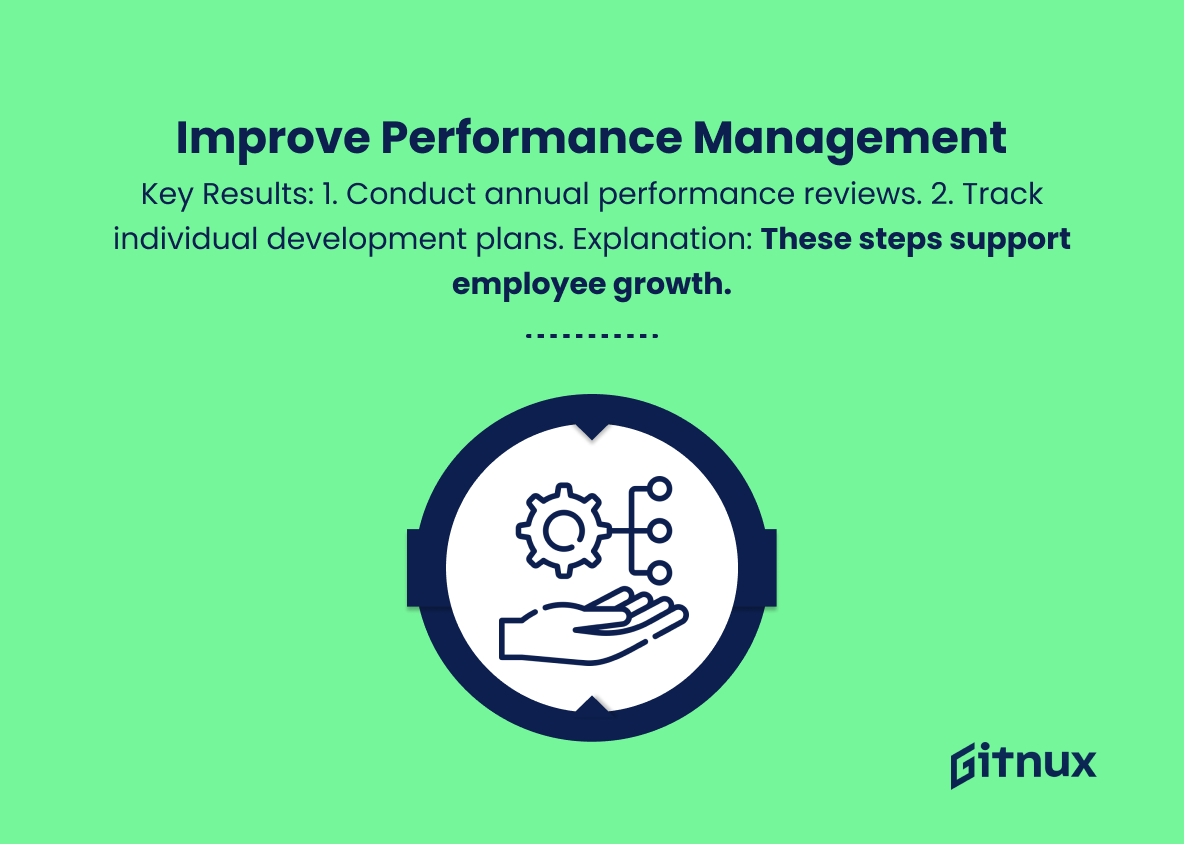In today’s rapidly evolving business landscape, the ability to adapt and grow is more critical than ever before. Learning and development (L&D) has emerged as a vital strategic function, driving not only individual employee growth, but also overall organizational success. As organizations strive to future-proof their workforce and stay ahead of the curve, setting clear and measurable objectives is vital.
This is where Objective and Key Results (OKRs) come into play by providing a powerful framework to track and achieve learning and development goals. In this insightful blog post, we will delve into the world of L&D OKRs, exploring their importance, benefits, and best practices for successful implementation, ensuring your organization remains on the cutting edge of growth and innovation.
Learning And Development OKRs You Should Know
1. Objective: Improve employee skill sets
Key Result 1: Increase the number of completed training sessions by 30%
Key Result 2: Implement a minimum of 3 workshops or webinars per quarter focused on in-demand skills
Explanation: Enhancing the skills and knowledge of employees through various training sessions, workshops, and webinars enables professional growth and effectiveness at work.
2. Objective: Foster a continuous learning culture
Key Result 1: Achieve a 90% employee participation rate in at least one learning activity per quarter
Key Result 2: Establish a mentorship program with 80% employee engagement
Explanation: Encouraging learning among employees and providing opportunities for mentorship helps build a growth-oriented and adaptable workforce.
3. Objective: Streamline the onboarding process for new hires
Key Result 1: Reduce onboarding time by 25% over the next two quarters
Key Result 2: Increase new hire satisfaction score by 20% within six months
Explanation: A streamlined onboarding process helps new employees adapt quickly to their roles, reduces overwhelm, and can improve overall job satisfaction.
4. Objective: Enhance leadership capabilities
Key Result 1: Create and implement a leadership development program for 10 potential leaders
Key Result 2: Increase employee promotions from within by 15% annually
Explanation: By nurturing and promoting employees with leadership potential, the organization can retain talent and create effective leaders.
5. Objective: Promote diversity and inclusion
Key Result 1: Offer 2 diversity-focused training sessions per quarter
Key Result 2: Achieve a 10% increase in the representation of underrepresented groups in the workforce within one year
Explanation: Establishing an inclusive and diverse workplace helps enhance innovation and collaboration, while also promoting equal opportunities for all employees.
6. Objective: Evaluate the effectiveness of learning programs
Key Result 1: Implement quarterly employee feedback surveys on the training programs
Key Result 2: Achieve a minimum 75% satisfaction rate on training sessions
Explanation: Obtaining employee feedback on learning initiatives can help identify areas of improvement and ensure that the training programs remain effective and relevant.
7. Objective: Encourage knowledge-sharing across the organization
Key Result 1: Implement a knowledge-sharing platform or system with 85% employee participation
Key Result 2: Host bi-monthly cross-functional team meetings or discussions
Explanation: Knowledge-sharing encourages collaboration, raises the collective expertise of the organization, and can lead to improved problem-solving and ideation.
8. Objective: Strengthen employee performance management
Key Result 1: Implement annual performance review process for 100% of employees
Key Result 2: Establish and track individual development plans for each employee
Explanation: Regular performance reviews and individual development plans ensure employees are guided in their professional growth and are provided with tailored support and resources.
9. Objective: Support employee career development
Key Result 1: Offer a minimum of 5 external professional development opportunities per year for interested employees
Key Result 2: Launch a job rotation or job shadowing program for 10% of employees annually
Explanation: By supporting employees in their career development, the organization benefits from a motivated workforce and may improve employee retention.
10. Objective: Reinforce a growth mindset among employees
Key Result 1: Introduce a “Growth Mindset” workshop for all teams in the company
Key Result 2: Implement a recognition program celebrating employee learning milestones or achievements
Explanation: A growth mindset is crucial for professional development, innovation, and adaptability. By encouraging and recognizing employee learning efforts, the organization fosters a continuous improvement culture.
Learning And Development OKRs Explained
The Learning and Development OKRs are essential in not only fostering professional growth and effectiveness among employees but also in building a growth-oriented and adaptable workforce.
By focusing on improving employee skill sets, continuous learning, effective onboarding, nurturing leadership, promoting diversity and inclusion, giving importance to employee feedback, encouraging knowledge-sharing, strengthening performance management, supporting career development, and reinforcing a growth mindset, the organization can expect increased employee engagement, satisfaction, and retention.
These OKRs help create a collaborative environment that drives innovation, effective problem-solving, and ultimately, increased productivity and success for the organization as a whole.
Conclusion
In summary, Learning and Development OKRs play a vital role in helping organizations thrive in today’s ever-evolving landscape. By setting clear objectives and measurable key results, businesses can ensure that their employees are consistently growing in their knowledge, skills, and capabilities.
This not only boosts overall performance but also enhances employees’ engagement, job satisfaction, and overall well-being. By prioritizing Learning and Development OKRs, organizations will enjoy the benefits of fostering a culture of continuous learning – giving them a competitive edge in driving innovation, adaptability, and long-term success.
